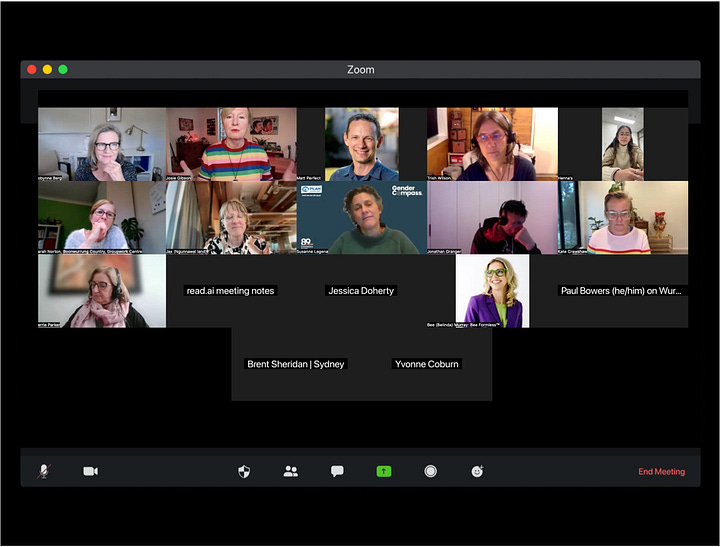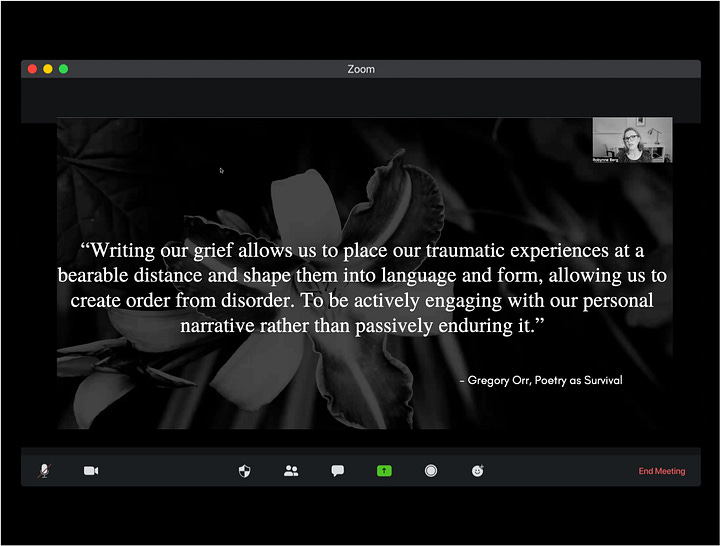Grief made visible
On art, memory and the healing power of creation.

In Japan, salt is sacred; extolled for its purifying and cleansing qualities since ancient times. It is central to rituals including marriages, childbirth and baptism. For Japanese funerals—Ososhiki—salt is laid in small piles called 'morishio’ outside the door of the funeral home and handed to mourners to sprinkle over their body on returning home. And it has been the chosen art medium of Motoi Yamamoto for over 30 years. Initially a painter, Yamamoto turned to salt in 1994 following the death of his sister Yuko, who died of a brain tumour at 24 years. Salt allowed him to preserve the memories of his sister and explore the ideas of life, death, grief and remembrance.
Over time his art developed alongside his grief. His earlier words, crafted from salt bricks were like large architectural remnants that terminated abruptly. Later, as his grief evolved, he designed intricate labyrinths from loose salt inspired by European mythology and the holistic notion of memory, and the hope of encountering his sister again. Then, in 2016 his wife, and mother of their four-year-old daughter, died of cancer and his designs transformed again. They became organic, circular like large swirling expanses of foaming water, infinitely tender in their lines and expression.
Yamamoto pours salt from a specially designed dispenser, spending up to ten hours a day, using the rhythm of his body and hands to painstakingly craft intensely intricate patterns on large expanses of floor. He is drawn to the purity, softness and transmuting quality of salt and its ubiquitous presence in nature—from our tears to the sea. For Yamamoto, salt is symbolic of the infinite presence of grief, the fragility of life, and eternal cycles of nature. He believes his desire to preserve memory through working with salt is equally futile and fundamental to healing.
Salt is symbolic of the infinite presence of grief, the fragility of life and
the eternal cycles of nature.
The delicate nature of salt and its vulnerability to its environment is synonymous with our own experiences of grief. As a mineral it can transmute and inhabit many organisms over time, representing the ephemeral nature of life and memory. To honour this, at the end of each of his exhibitions, Yamamoto, gallery visitors and staff sweep up the installation, gather the salt and return it to the sea, into the cycle and rhythm of life.
Yamamoto’s work is an invitation to explore our personal losses and our relationship with memory and healing. His work reminds me of grief’s long, transitory journey, its ever-presentness, the love and beauty at its heart. Something in me softens and makes way for growth as I leaf the gracious image-filled pages of his artist book Return to The Sea. I sense myself entering into the rhythm of Yamomoto’s works, following the quiet rhythm of his body as he works. It brings me into presence not only with my grief, but with those I have lost, as if they too are present in his work. It’s something I feel deep within my body, an intrinsic knowledge or truth, a sense of being anchored to the world and within my specific experience.
It brings me into presence not only with my grief, but with those I have lost, as if they too are present in his work.
This is the transformative and healing power of art. Through both aesthetic appreciation and creative practice, I have been granted some of the most moving and expansive experiences of my life. Whether standing before Vincent van Gogh’s self-portrait in the Musee d’Orsay, my body slipping into the exquisite rhythm of his brushstrokes—one fragile person standing before another. Or sitting at my desk in the early light of morning, the delicate strains of Arvo Part’s Tractus holding me as I write into the heart of my suffering.
The preeminent aesthetic philosopher, Susan Langer, said art gives us a unique access into the human experience in a way that language cannot. It is innate and primordial, just as it is representative of the highest of human achievement. Art offers us knowledge and insight into the depths and dimensions of our ‘felt sense of things’ and our place in the world. Its nature allows us to both connect with our feelings and experience feelings new to us. Yet beyond the felt experience itself, art—along with myth and ritual—embodies meaning. It is where we find the meaning of our human experience.
Over the coming weeks I’ll be exploring the role of art and artists in helping us heal and find meaning in our loss. We’ll delve into the works of Nick Cave, Patti Smith, Rainer Maria Rilke, Ellen Bass, Gregory Orr, Mark Tredinnick and others and how they have threaded grief into their creative practice. And we’ll discuss how each of us can find our voice from within our suffering, and bring it into expression on the page, the canvas, or the keyboard for healing.

Returning to the Sea
I recently attended Scanimalia, towards scanning for Ocean Care, an exhibition by my friend, the artist and academic Amanda Morgan. Her current collection is a meditation on the ocean, marine life and the powerful human connection we have—or might have—with other animals sharing our imperilled planet. The exhibition incorporates scanned images of sea objects she has gathered along the shores of Port Phillip Bay and Phillip Island during her swims.
Her work interweaves the sea, grief and healing into exquisite compositions of shells, starfish, seaweed, seeds, sponges, humans and light, thoughtfully arranged on the flatbed to represent the reef. Her work is profoundly moving and speaks to the many of us who have found healing through ocean swimming. I recall entering the gallery at her opening and feeling these stunning ocean images—replete with bubbles, sand and light—wash over me. I was drawn to the sublime artwork (shown with Amanda in the photo above) of a sea sponge. I purchased it and look to it each evening, seeing new detail in it every time. It feels so alive, so real I sense I could reach through the frame’s glass and touch its delicate gel ostia with my fingertips.
Amanda and I are icebergers at Dendy beach in Melbourne. We have each experienced a deep intimate connection with the sea and marine environment. We both have lost family members to the sea. Swimming in early light as the horizon ripens to morning has been healing for both of us. Amanda writes of the transformative and essential qualities of her connection to swimming and the sea’s natural environment. Quoting artist Miranda July, she speaks of finding within the marine environment ‘[a] beautiful, altered state of being’. For me, the return each morning to the sea, feels like a return to my loved ones, to memories of family and to the gentle resting place of my sorrow.
Amanda hasn’t spoken of it, yet I can feel her father present in each of her works. I suspect he was alongside her as she gathered the objects on the beaches after her swim, as she thoughtfully composed them on the flatbed and scanned the compositions into the collection’s stunning images full of love, beauty and light.
Stillness Writers Room Session
I had the privilege of delivering my first Stillness Writers Room grief writing session to the Catalyst Network—a group of forward-thinking entrepreneurs and systems design practitioners. Thank you to Josie Gibson and the wonderful group who attended. This was also a taste-test for my upcoming Stillness Grief Writing Retreat. Book now to secure a seat for the August retreat. Numbers limited to 15.


Stillness Grief Writing Retreat
Open for Registration
The Stillness Grief Writing Retreat is for people who wish to put words to their grief. It’s a place for all writers—non-writers, emerging or professional—to work with self-enquiry and storytelling prompts to craft a written work to honour a grief— or other loss—and transform it into beauty.
The Retreat is a 2.5 day livestream writing program (via zoom). This is an intimate group with a maximum of 15 attendees. Alumni are then invited to join the SWR community.
The program will help you travel deep into the heart your story to develop your narrative and craft it into a piece of work whether an essay, memoir, short story, poem, prose, lyrics or journal.
Registration is now open for the following dates.
Friday 22 August - Sunday 24 August, 2025
(NB: discount for paid subscribers).
Community Question on the art of grief
Is there a particular artistic practice or an artwork, poem, book or piece of music, that supported you through a period of morning. I would love to hear your story.
The Stillness Room
The Stillness Room is a space I’ve created so that we might each explore the nature of grief and what it is to be human. It’s a search for meaning through literature, poetry, writing, music, art, philosophy, contemplation and connection, that I’ll share through regular (fortnightly) posts, inspirations, recordings and interviews. I explore themes including how we experience grief, the need for witnessing, how to listen, the healing power of art, poetry and music, the search for meaning after loss, the inner stillness found in nature. I’ve created this space so you can attend quietly to your story, and if you wish to, join the community.
A space created, where you can attend quietly to your story.
I hope to build community here and invite you to reach out with your own story or to ask a question about grief or loss and anything you’d like me to address through this platform.
If it’s too early to contemplate paid subscription, you may like to spot me a coffee. Every morsel of support will be deeply appreciated and will help me dedicate more time to this space. And please share this post or the grief writing retreat with anyone you feel may need it.
Thank you for being here. And welcome.
Robynne x



